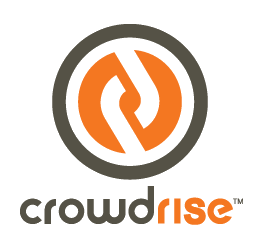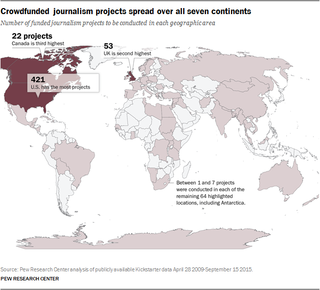Related Research Articles

Fundraising or fund-raising is the process of seeking and gathering voluntary financial contributions by engaging individuals, businesses, charitable foundations, or governmental agencies. Although fundraising typically refers to efforts to gather money for non-profit organizations, it is sometimes used to refer to the identification and solicitation of investors or other sources of capital for for-profit enterprises.
Matching funds are funds that are set to be paid in proportion to funds available from other sources. Matching fund payments usually arise in situations of charity or public good. The terms cost sharing, in-kind, and matching can be used interchangeably but refer to different types of donations.

University Charles III of Madrid (UC3M) is a public university in the Community of Madrid, Spain. Established in 1989, UC3M is an institution with a distinctly international profile. It offers a broad range of master's and bachelor's degree programs in English, and nearly 20% of the student body is made up of international students. It is the first university in Spain and the third in Europe in the number of its students participating in the Erasmus student exchange programs.
Fan-funded music is crowdfunding for music. Often, fan-funded music occurs in conjunction with direct-to-fan marketing. Fans of music have the option to donate and collectively raise money with the goal of jump-starting the career of a given musical artist. The fan-funding of music occurs primarily through web-based services using a business model for crowdfunding. Fans are typically given rewards based on their monetary contributions.

CrowdRise is a for-profit crowdfunding platform that raises charitable donations. CrowdRise was founded by Edward Norton, Shauna Robertson, and the founders of Moosejaw, Robert and Jeffrey Wolfe. CrowdRise was acquired in 2017 by GoFundMe.

Indiegogo is an American crowdfunding website founded in 2008 by Danae Ringelmann, Slava Rubin, and Eric Schell. Its headquarters are in San Francisco, California. The site is one of the first sites to offer crowd funding. Indiegogo allows people to solicit funds for an idea, charity, or start-up business. Indiegogo charges a 5% fee on contributions. This charge is in addition to Stripe credit card processing charges of 3% + $0.30 per transaction. Fifteen million people visit the site each month.

Funding4Learning is a "human capital oriented" crowd funding platform for educational projects. Funding4Learning provides its users with fundraising tools for study, volunteering, as well as a diverse array of education related initiatives.
FundaGeek was a crowd funding resource designed for funding project involving technology, scientific research, inventions and community support. Funding is provided through backers who make pledges in return for rewards provided by the project owners. Fundageek does not regard crowd funding as an investment or a debt instrument, and pledges do not involve any form of equity interest. The April 2012 JOBS Act opens up the prospects for "equity crowdfunding" however the SEC has not yet defined the required rules for participation. The industry expects this to happen in 2013.

GoFundMe is an American for-profit crowdfunding platform that allows people to raise money for events ranging from life events such as celebrations and graduations to challenging circumstances like accidents and illnesses. From 2010 to the beginning of 2020, over $9 billion has been raised on the platform, with contributions from over 120 million donors.
Crowdfunding is a process in which individuals or groups pool money and other resources to fund projects initiated by other people or organizations "without standard financial intermediaries." Crowdfunded projects may include creative works, products, nonprofit organizations, supporting entrepreneurship, businesses, or donations for a specific purpose. Crowdfunding usually takes place via an online portal that handles the financial transactions involved and may also provide services such as media hosting, social networking, and facilitating contact with contributors. It has increased since the passage of the Jumpstart Our Business Startups (JOBS) Act.

FundRazr is a free crowdfunding and online fundraising platform released in 2009. FundRazr operates internationally in 35+ counties with the largest markets being United States, Canada, United Kingdom and Australia. It allows users to run a wide-range of crowdfunding campaigns by creating fundraising pages and sharing it via social media, messaging apps, email and more to raise money for over 100 types of causes such as nonprofit, medical care, education, community help, poverty alleviation, arts, memorials, and animal rescue causes. FundRazr also works with more than 4000 nonprofits, charities and social enterprises with an advanced fundraising toolset for free. The digital fundraising platform provides 8 different campaign types. They include microproject fundraising, peer-to-peer campaigns, wishlist campaigns, recurring donations, branded sponsorship campaigns, DIY projects, sweepstake campaigns, and storefront campaigns.
Experiment, formerly called Microryza, is a US website for crowdfunding science-based research projects. Researchers can post their research projects to solicit pledges. Experiment works on the all-or-nothing funding model. The backers are only charged if the research projects reach their funding target during a set time frame. In February 2014, the site changed its name from Microryza to Experiment.com.
YouCaring was a crowdfunding website for personal, medical, and charitable causes. The company was a Certified B corporation based in San Francisco, California. YouCaring did not take a percentage of funds raised on its site, or charge those raising funds a fee. The company relied on voluntary donations from donors to fund operations. YouCaring was acquired by GoFundMe in 2018.

For project funding, Citizinvestor was a civic crowdfunding website that describes itself as a "crowdfunding and civic engagement platform for local government projects on the United States."

Fundly is a crowdfunding site for online fundraising. It allows non-profits, charities, politics, clubs, schools, teams, churches, and other causes to raise money online from friends, family, colleagues, donors, and other supporters via email, Facebook, Twitter, LinkedIn, Google, and social media networks. It is also an app for social networks like Facebook and LinkedIn. It uses WePay to process donations. Donors are charged when they make a donation. Other sites like Fundly include GoGetFunding, Indiegogo and Kickstarter.
@HopeMob was a not for profit crowdfunding site that raised money for direct aid to worthy causes. It was co-founded by Shaun King and Chad Kellough in 2012. People with specific needs apply to the site and are vetted. The vetting includes asking for references, conducting interviews, and researching on social media. Support is then given to approved projects to help them present a compelling case. Funds are then raised and used to purchase the specific items people need, such as a medical procedure; money is not given directly to those raising funds.
Crowdfunding is the practice of funding a project or venture by raising money from a large number of people, typically via the internet. Crowdfunding is a form of crowdsourcing and alternative finance. In 2015, over US$34 billion was raised worldwide by crowdfunding.
Beacon or Beacon Reader was an independent web platform to fund journalism projects founded in 2013. It was based in Oakland, California. Hundreds of journalists used the platform to finance their writing and investigations. The organisers worked with newspaper publications to promote the projects, and to help the stories produced reach a wider audience. Beacon announced in an email on October 4, 2016 that they are no longer offering services for journalists or backers, and that on September 12, 2016 all active subscriptions were cancelled and no further contributions could be made.

Crowdfunded journalism is journalism that is financially sourced by the collection of donations from the general public. Typically, journalists rely on micropayments from ordinary people to finance their reporting. Crowdfunding is typically related to crowdsourcing, because the source of funding is often from a larger third-part group or crowd. The audience can support journalism projects by donating sums of money, or other resources, through popular crowdfunding websites such as GoFundMe and Kickstarter. In the early 2010's, there were a variety of crowdfunding sites that only supported journalistic endeavors, but many are since retired due to conflicts of interest, such as Spot.us.
GiveSendGo is a Christian crowdfunding website. It has attracted controversy for facilitating the funding of far-right, neo-Nazi, alt-right, and white supremacist activists and hate groups.
References
- ↑ Belleamme, P., et al., Crowdfunding: Tapping the right crowd, J. Bus. Venturing (2013) Retrieved 6 Nov 2014.
- ↑ Bench, Taylor (20 Dec 2012). "University of Utah Embraces “Crowdfunding” to Develop Technologies". UNews Center. (http://unews.utah.edu/news_releases/university-of-utah-embraces-crowdfunding-to-develop-technologies/) Retrieved 6 Nov 2014.
- ↑ Craven, Julia. "Universities explore crowdfunding, social media to raise money". USA TODAY. Retrieved 2023-04-20.
- ↑ "This Might Be The Craziest College Scholarship Idea Yet". HuffPost. 2013-09-21. Retrieved 2023-04-20.
- ↑ Gossen, Andrew (22 Oct 2014). "100% Funded: How to Promote a Crowdfunding Project". (http://higheredlive.com/how-to-promote-a-crowdfunding-project/) Retrieved 6 Nov 2014.
- ↑ Archived 2014-11-07 at the Wayback Machine [ title missing ]
- ↑ "UC Berkeley | Crowdfunding". crowdfund.haas.berkeley.edu. Retrieved 6 Nov 2014.
- ↑ "Mary Holmes Legacy Project". crowdfund.ucsc.edu. Retrieved 6 Nov 2014.
- ↑ "Ole Miss Pharmacy Day of Thanks". ignite.olemiss.edu. Retrieved 6 Nov 2014.
- ↑ "Houston-Alumni City Race". fund.utsa.edu. Retrieved 6 Nov 2014.
- ↑ "Short on grant money? Five tips for crowdfunding success". The Conversation. Retrieved 2023-04-20.
- ↑ Walsh, Lucas. "By the masses: the emergence of crowdfunded research in Australia". The Conversation. Retrieved 2023-04-20.
- ↑ "$150K in 30 Days for UCLA Gymnastics!". spark.ucla.edu. Retrieved 6 Nov 2014.
- ↑ "Ole Miss Football October 4, 2014 Victory Celebration". ignite.olemiss.edu. Retrieved 6 Nov 2014.
- ↑ "Rebels with cause: Fans pay for fine, damage". ESPN.com. 2014-10-08. Retrieved 2023-04-20.
- ↑ "MIT Crowdfunding".
- ↑ "Launch UMD". www.launch.umd.edu. Retrieved 2023-04-08.
- ↑ "Sentinel Hives: Guardians of Honey Bees". www.launch.umd.edu. Retrieved 6 Nov 2014.